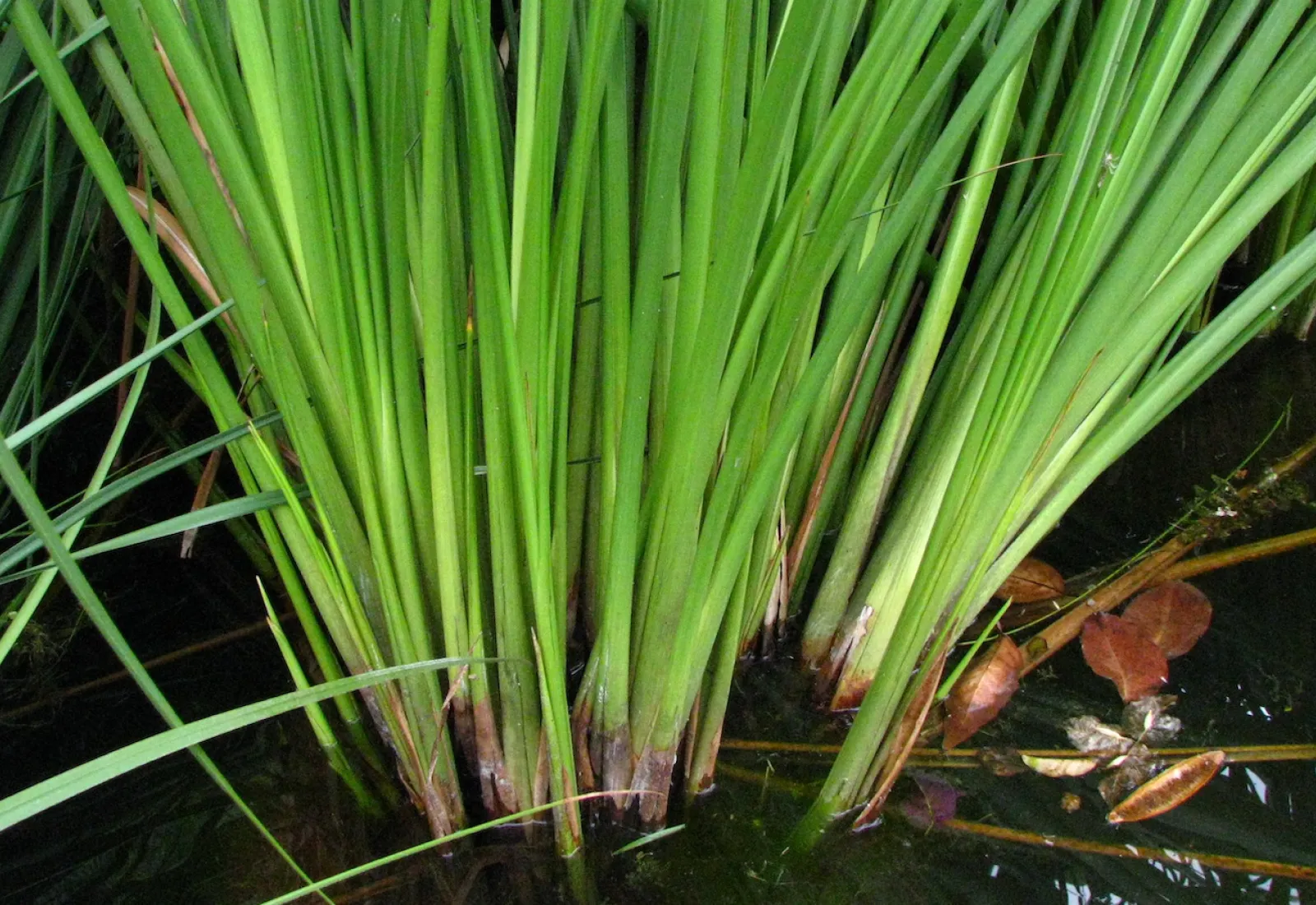Cladium around the kopara pond on motu Rimatu'u
Our organism of the month is Cladium mariscus (subspecies jamaicense), otherwise known by its English common name as “sawgrass” or in Tahitian as uti uti. This hardy sedge grows in wet and slightly submerged habitat around the lakes and depressions that dip into the water table on the motu.
The variety found in Polynesia, Cladium mariscus ssp. jamaicense is a large sedge with long tough leaves growing from rhizomes. Each stand produces a number of large flower spikes that rise above the leaves.
Sedges are the common name for plants in the Cyperaceae family and a closely related to rushes and grasses. The genus Cladium has three species, and the species C. mariscus has four subspecies. Remarkably the natural distribution of this species covers most of the globe.
- C. mariscus mariscus covers Europe and Asia,
- C. mariscus mariscoides covers temperate North America,
- C. mariscus californicum covers California, Arizona, New Mexico, Nevada, Utah, Texas, Sonora, Coahuila, and
- C. mariscus jamaicense covers Latin America, the Caribbean, Southeast US, tropical Africa, and islands from Madagascar across to all of Polynesia.
The same subspecies found in Tetiaroa is the signature plant of the Florida Everglades where it serves as nesting habitat for alligators.

C. mariscus mariscus
Photo: Kristian Peters CC BY-SA 3.0

C. mariscus mariscoides
Photo: CJChapm CC BY-SA 4.0

C. mariscus californicum

C. mariscus jamaicense
The incredible worldwide distribution of this plant is enabled by a seed-like fruiting body called an achene that can withstand prolonged periods in seawater and being processed by the digestive tracts of birds.

Photo: © Hans Hillewaert / CC BY-SA 4.0

An emerging bud
Dispersal as a floating seed might account for short over-water distances, but it is likely that birds carried the seeds between oceanic islands and continents.
Once in place sawgrass reproduces sexually via windblown pollen, but it also produces clones that bud off of rhizomes.
This allows the plant to quickly take over prime habitat. It also means that any given marsh could be made up of some number of individual plants that have cloned off clumps of themselves in inter-twining patterns.

Cladium grows in a wide border between the the kopara pond and the coconut tree forest on motu Rimatu'u.

Cladium cordage from Hawaii
In Hawaii, where it is called uki it was recorded that it was in costumes and cordage, but there is very little information about use across the rest of Polynesia. The same species has been used for thatch and biofuel in England.

Cladium-thatched roof
Uti uti grows in a wide border around the motu ponds.
On Tetiaroa sawgrass can be seen around the lakes on Horoatera and Rimatu'u where it forms a wide border, and on other motu in depressions that come close to the water table.


